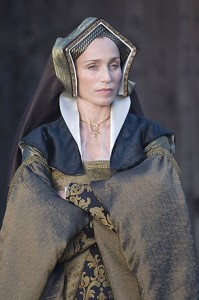
On this day in history, Elizabeth Boleyn, Countess of Wiltshire and Ormond, wife of Thomas Boleyn and mother of the late Queen Anne Boleyn, died near Baynard’s Castle, home of the Abbot of Reading, in London. She was around sixty-two years of age.
Thomas Warley wrote of her death in a letter to Lady Lisle dated 7th April 1538:
“My lady of Wiltshire died on Wednesday last beside Baynard’s castle.”
And on 9th April 1538, John Husee wrote to Lady Lisle of Elizabeth’s burial at St Mary’s Church, Lambeth, on 7th April:
“My lady Wiltshire was buried at Lamehithe [Lambeth] on the 7th. My lord Comptroller was chief mourner of the men and lady Dawbny of the women. She was conveyed from a house beside Baynard’s Castle by barge to Lambeth with torches burning and four baneys (banners?) set out of all quarters of the barge, which was covered with black and a white cross. At her burial was the King of Heralds, a herald, and a pursuivant.”
Elizabeth’s cause of death is unknown, but she had been ill in April 1536, suffering with a cough “which grieves her sore”. It may have just been a cough, but it could have been the start of a more serious illness, we don’t know.
Here is a video I did on Thomas and Elizabeth Boleyn.
Notes and Sources
Photo: Elizabeth Boleyn as played by Kristin Scott Thomas in “The Other Boleyn Girl”.
- Letters and Papers, Foreign and Domestic, Henry VIII, XIII, Part 1, 696 and 717.
- LP X. 669.